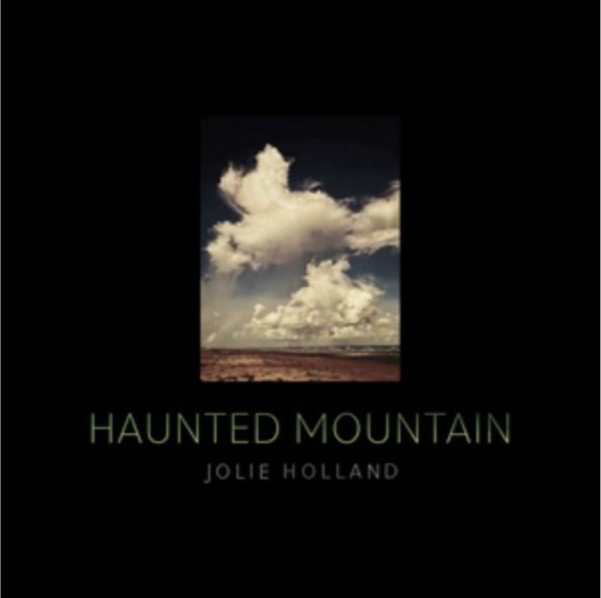
Jolie Holland: A Counterculture Artist
Jolie Holland has reemerged, and good things are bound to happen. As a musician, she continues to evolve like the best of them, retaining the interest of longtime fans while captivating new listeners. Her last full album resonates somberly under her quintessential, haunted voice. As pretty and sweet as beads of nectar, her vocals flow through harmony and rhyme. They are a spark on dark lyrics, electrified on strings.
“Orange Blossoms” is the eighth track from that recording. The Haunted Mountain album was released on Cinquefoil Records. This particular track encapsulates the album’s themes of paradox: darkness smothered in light, light marred by darkness. For instance, this lyrical dance: “We are so rich with the blossoms, nature is holding our hand and whispering, ‘now is the time to dance’.”Meanwhile, the song continues, “We are standing on the precipice,” of quite a different thing. Destruction looms. At an L.A. show in December, Holland shared with us, at a gig with The Velvet Rat, in a back stage performance at The Hotel Cafe, the precipice—it was the war in Ukraine. She talked about being in Los Angeles, adoring the fragrance of Southern California’s blossoming orange trees when the first bombs blasted, hearing that news and fearing for a friend in Ukraine. “I am drinking in these blooms while annihilation looms.” It’s not the only song on the album that truly shines, it warrants a listen, go ahead. You won't regret a stream. Haunted Mountain’s subtle mystery will grow on you.
Jolie Holland first rose above the fray in 1999, and soon made a name for herself with Escondida. To learn more about her collaborating bands, merch, and artwork, the Jolie Holland store is found at JolieHollandMusic.com.
Escondida, the 2004 album that caught the ear of American music creator veterans like Tom Waits is nothing short of captivating. Escondida, recorded in four and a half days under the canopies of redwood giants in a Forestville cabin, and produced by Anti Records is considered a classic. Her musical style has roots in the 1990s folk insurgence, but by the time of Escondida’s release, Holland had developed as a singer songwriter, ditching the twang for a more serious sound. As it happens, she doesn't actually prefer to be called a "singer-songwriter," in English, at least. She thinks it sounds sweeter translated to Spanish. Speaking of Latin languages, in the same vein, Escondida can mean hide-and-seek in Spanish. And, to be honest, Escondida is like a hidden treasure waiting to be discovered, floating inconspicuously; found like a rare sea creature magically rising above the endless sea of streamed choices.
Holland is playing in Chicago this month. She’s been stepping out on social media announcing show dates while reminding us of her counterculture origins. Some fans might be surprised to know she's from the South, but this is where she started. Growing up as a street kid in Houston, she was a visual artist before she learned guitar. Homeless and talented and admiring the talent impoverished around her, she came of age among southern collectivists and artists. We don’t dare speak too forcefully about such things, but suffice it to say, this artist is against war, for nature, and a voice for the struggling.
Those four-and-a-half days, the making of the magic of Escondida, began with a dream and a sort of vision. She tells the story on Life of the Record. The night before the recording, the rising musical artist had a dream about red-wing blackbirds going extinct. Prior to heading out to Forestville, she was running errands for the trip. That's when she noticed a red-wing blackbird land on a branch next to her. "And to me, that was a sign of, I was worried that something was going to go extinct," she said, "but it’s not, it just shows up. The studio doesn’t have to be a place where music dies." Indeed.
It was her first studio recording. She and a troupe of musicians from San Francisco, David Mihaly, a jazz composer, Brian Miller from The Speakers, Keith Cary on Bass, Ara Anderson and Paul Scriver contributed horns, and Enzo Garcia played the saw. Together, this studio was a place where music thrived phenomenally. "We had these incredibly diverse sets," she said, "Yeah, it was just this incredibly diverse."
The road to Escondida wound through Catalpa. Catalpa (2002) was self-released and she sold it at shows in San Francisco. The raw recording was part of the magic, it even captured a cough. Two actually. She liked it that way. It was a surprise hit, making the top ten on both coasts. An audience was out there, and it came as a surprise. She talkked about this on a recent podcast. Before Catalpa, she recorded another beautiful album with The Be Good Tanyas. Blue Horse (2001) with Samantha Parton came together in Vancouver.
Holland is on the road touring again. She signed with Madison House recently, sharing the collaboration on her socials. And, recently, she is on Instagram reminding us of her counterculture roots, sharing a variety of causes. With all of these recent movements, is there perhaps a new album on the horizon? Follow her budding socials and witness her go to scale, once again.

Post a comment